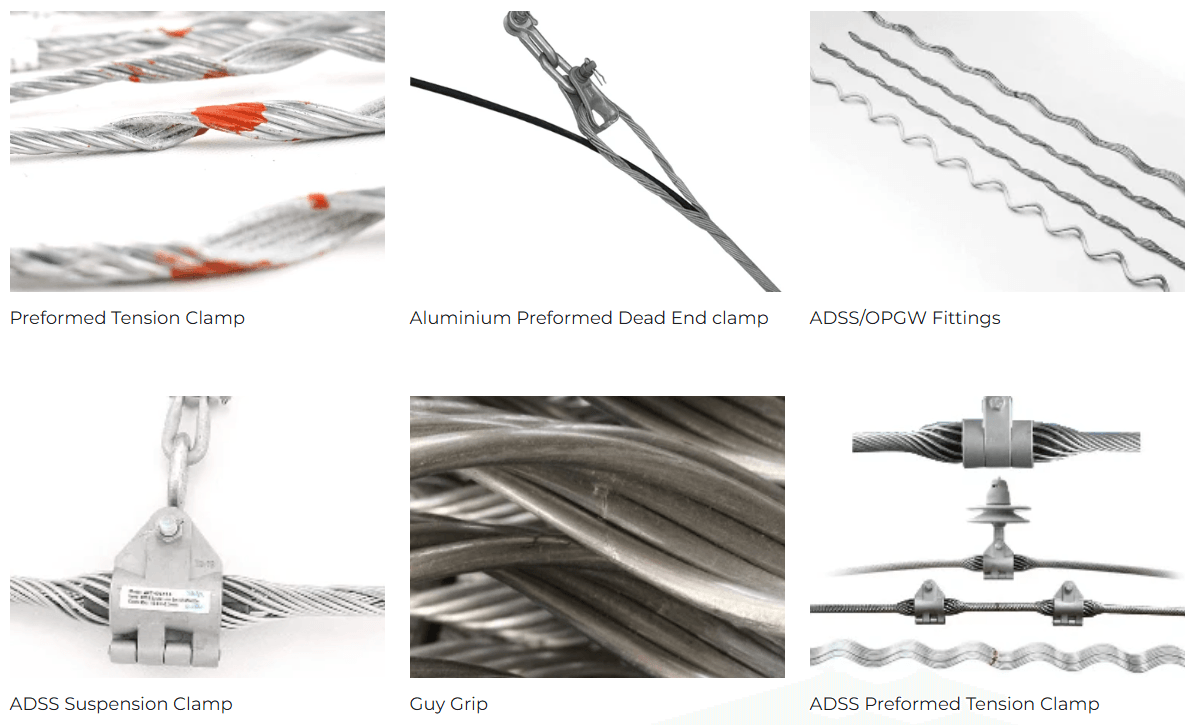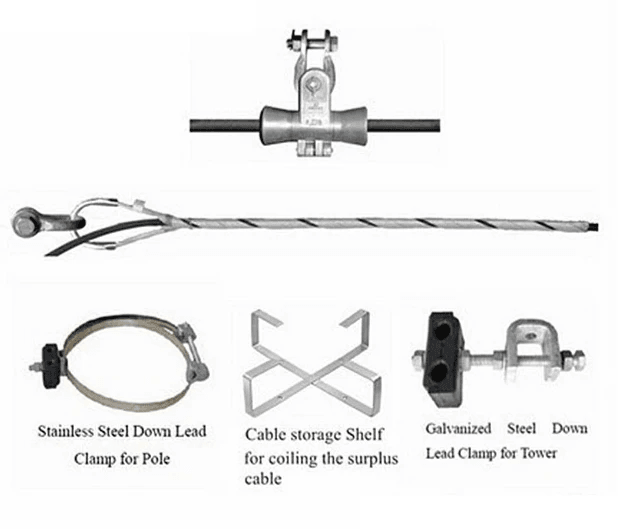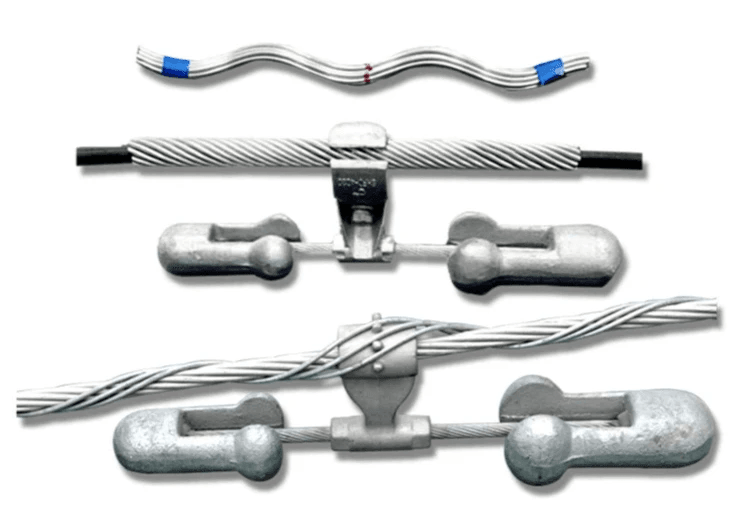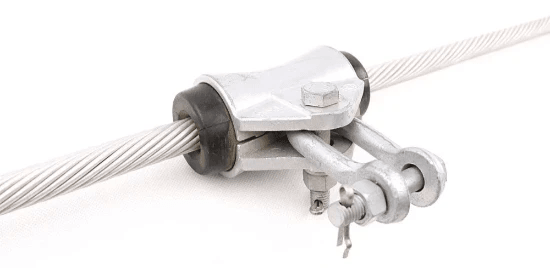Introduction
This versatile device plays a significant role in numerous applications, from construction to electrical setups, ensuring that loads are safely managed and transferred. Understanding what a clevis tool is and its importance can greatly enhance your ability to select the right equipment for your specific needs.
Understanding the Socket Clevis
A socket clevis is essentially a U-shaped fitting designed to connect rods or cables effectively. It features an eye or hole at one end, allowing for easy attachment to hooks or pins, while the other end is often designed to fit over a shaft or pin securely. This design not only simplifies connections but also offers flexibility in various configurations, making it an essential component in many engineering applications.
Importance of Clevis Tools
Clevis tools are vital for proper installation and maintenance of socket clevises and other related fittings. These tools ensure that connections are secure and reliable while providing the necessary leverage for installation without damaging components. Knowing how to use these tools effectively can save time and prevent costly mistakes during assembly or repair work.
Overview of Clevis Types
There are several types of clevises available, each serving different functions depending on their design and application requirements. Aside from the standard socket clevis, you may encounter variations like thimble clevises, Y-clevis balls, and socket eyes—each with unique features tailored for specific tasks. Understanding these differences can help you choose the right type of clevis for your project needs.
What is a Socket Clevis?

The socket clevis is a versatile and essential component in various mechanical and electrical applications. It serves as a connection point that allows for the secure attachment of cables, rods, or other components, facilitating movement and load distribution. Understanding the intricacies of the socket clevis can enhance its effectiveness in any project.
Definition and Functionality
A socket clevis is essentially a U-shaped device designed to hold and secure other components through its open end, which can accommodate pins or bolts. This design enables it to pivot around the attachment point, allowing for flexibility in movement while maintaining stability under load. The functionality of a socket clevis makes it indispensable in both rigging applications and machinery setups.
Applications of Socket Clevis
Socket clevises find their way into numerous industries including construction, telecommunications, and electrical engineering. They are commonly used to connect wires or cables to structures like poles or towers—this leads us nicely into the question: what is a clevis tool? Additionally, they play critical roles in machinery where precise alignment and movement are necessary for optimal performance.
Benefits of Using Socket Clevis
Using a socket clevis comes with several advantages that enhance operational efficiency. First off, they provide strong connections that withstand significant loads without compromising safety—think about how important this is when working at heights! Furthermore, their ease of installation means you can spend less time on setup and more time on actual work; plus, they allow for quick disassembly when needed.
What is a Clevis Tool?

A clevis tool is an essential piece of equipment used in various applications, particularly when working with clevis fittings. These tools facilitate the installation and removal of different types of clevises, including the popular socket clevis, thimble clevis, and Y-clevis ball. Understanding what a clevis tool is can significantly enhance your efficiency in tasks that involve rigging and securing loads.
Common Types of Clevis Tools
There are several common types of clevis tools designed for different functions. For instance, you have the standard pin pullers that help remove pins from socket eyes or thimble clevis connections without damaging them. Additionally, there are specialized wrenches tailored to fit various sizes of socket clevis and other fittings, making it easier to tighten or loosen connections as needed.
Another important type is the hydraulic puller, which can handle more substantial loads when working with heavy-duty applications involving socket clevis installations. These tools not only save time but also ensure that installations are performed safely and efficiently. With these options available, selecting the right type of clevis tool can make all the difference in your project outcomes.
Tools for Socket Clevis Installation
Basic hand tools such as pliers and adjustable wrenches often suffice for simpler installations; however, more complex setups may require specialized equipment like torque wrenches or impact drivers designed specifically for socket eye fittings.
For larger projects involving multiple installations or heavy loads, hydraulic jacks can be beneficial as they provide additional force needed to secure a tight fit on a socket clevis eye connection without straining human effort unnecessarily. Using these tools correctly not only enhances productivity but also minimizes wear on both the components being connected and the installer themselves.
Choosing the Right Clevis Tool
Selecting the right clevis tool involves considering several factors such as application type, load capacity requirements, and compatibility with specific fittings like thimble or Y-clevis balls. It’s essential to match your tool choice with the size and type of socket eye you’ll be working with to ensure optimal performance during installation or removal processes.
Additionally, always assess whether you need manual or powered options based on your workload expectations; sometimes investing in high-quality hydraulic versions pays off in terms of longevity and ease-of-use over time compared to standard hand tools. Ultimately, understanding what is a clevis tool will empower you to make informed decisions that streamline your tasks while ensuring safety standards are met across all applications.
Exploring Clevis Electrical

This specialized type of clevis is designed to provide secure connections and enhance the functionality of various electrical systems. Understanding what a clevis electrical is can help you appreciate its role in ensuring safety and reliability in electrical setups.
Definition of Clevis Electrical
So, what is a clevis electrical? It refers to a specific type of clevis that is tailored for use in electrical applications, often featuring materials that resist corrosion and withstand high temperatures. Typically made from durable metals or composites, these clevises are engineered to securely hold components like insulators or conductors while allowing for some movement—essentially making them indispensable in many setups.
Uses in Electrical Applications
Clevis electrical components are utilized across various sectors, including telecommunications, power distribution, and renewable energy systems. They can be found securing lines in overhead power systems or connecting insulators to poles—ensuring everything stays intact even during adverse weather conditions. Moreover, the socket eye design found in many clevises allows for easy installation and adjustment, making them versatile tools for any electrician's toolkit.
Advantages of Using Clevis Electrical
One significant advantage of using clevis electrical fittings is their ability to provide robust support while maintaining flexibility; this means less risk of breakage under stress compared to rigid connectors. Additionally, because they often come with protective coatings or are made from corrosion-resistant materials, they offer longevity even when exposed to harsh environmental factors—perfect for outdoor applications! Finally, their compatibility with other types like socket clevis and thimble clevis makes them an essential part of any comprehensive rigging solution.
What is a Thimble Clevis?

When diving into the world of clevises, one may stumble upon the thimble clevis, an essential and often misunderstood component. A thimble clevis serves a unique role in securing connections, particularly in rigging and lifting applications. Understanding its design and functionality can help clarify its importance compared to other types, such as the socket clevis.
Understanding Thimble Clevis
A thimble clevis is essentially a U-shaped device that features a rounded end designed to accommodate various types of cables or ropes. It often includes a pin or bolt that secures the connection while allowing for some flexibility in movement. This makes it particularly useful in applications where dynamic loads are present, ensuring both safety and stability.
The thimble clevis is frequently used in conjunction with other hardware, such as shackles or hooks, to create secure connections that can withstand significant tension. Its design helps distribute load evenly across the connected components, mitigating wear and tear over time. Overall, understanding what is a thimble clevis opens up avenues for improved rigging practices.
Differentiating Thimble from Socket Clevis
While both socket clevises and thimble clevises serve similar purposes in terms of connecting components, they possess distinct characteristics that set them apart. The primary difference lies in their design; a socket clevis typically features an enclosed end that allows for more secure attachment points compared to the open-ended nature of the thimble clevis.
Moreover, socket eyes come with additional features like locking mechanisms which provide enhanced security during operation—something you won't find on traditional thimble designs. This distinction makes each type suitable for different scenarios; while socket clevises excel in heavy-duty applications requiring maximum security, thimble clevises shine when flexibility and adaptability are key.
Understanding these differences can help you choose between What is a clevis tool? or What is a clevis electrical? depending on your specific needs—whether you require robust security or adaptable functionality.
Application Scenarios for Thimble Clevis
Thimble clevises find their niche in various applications across industries such as construction, marine operations, and even recreational activities like sailing or climbing. For instance, they can be employed to attach sails on boats securely without compromising their ability to move freely with wind changes—a perfect example of their flexibility at work.
In construction settings where rigging plays an integral role, using a thimble instead of other types like the socket eye can enhance maneuverability without sacrificing safety standards. Additionally, when working with lighter loads where dynamic movement is expected—like those seen with Y-Clevis balls—thimbles provide an excellent solution by allowing controlled movement while maintaining structural integrity.
In summary, whether you're pondering over What is a thimble clevis? or looking into custom solutions from Spark Fittings for your next project involving socket fittings or electrical components—knowing your options will always lead you down the right path!
The Socket Clevis Eye Explained

The socket clevis eye is a critical component in various rigging and pulling applications, offering a unique design that enhances functionality and safety. This specialized clevis features a rounded opening that allows for easy attachment to hooks, chains, or other rigging devices. Understanding the intricacies of the socket eye can help users make informed choices in their projects.
Features of Socket Clevis Eye
One of the standout features of the socket clevis eye is its robust construction, often made from high-strength materials that can withstand significant loads. This design not only provides durability but also ensures reliable performance under stress, making it an excellent choice for demanding tasks. Additionally, the smooth contours of the socket eye facilitate seamless connections with other rigging components, minimizing wear and tear during use.
Importance in Rigging and Pulling
In rigging and pulling scenarios, the socket clevis eye plays an indispensable role by enabling secure connections between various elements of a lifting system. Its design allows for quick attachment and detachment without compromising safety or stability—ideal for dynamic environments where time is crucial. Furthermore, using a socket clevis eye reduces the risk of accidents by ensuring that loads are distributed evenly across all connected parts.
Comparing Socket Eye with Other Clevis Types
When comparing the socket eye to other clevis types—like Y-Clevis Balls or thimble clevises—it's essential to consider their specific applications and strengths. While Y-Clevis Balls may offer versatility in certain contexts, they lack some of the load-bearing capabilities found in a well-designed socket clevis eye. Thimble clevises are great for certain applications as well but may not provide the same level of strength or ease of use when it comes to heavy-duty tasks.
Custom Solutions from Spark Fittings

When it comes to custom solutions for socket clevis applications, Spark Fittings stands out as a leader in the industry. With a focus on quality and innovation, they offer tailored solutions that meet the specific needs of their clients. Whether you’re looking for a unique socket clevis design or specialized clevis tools, Spark Fittings has got you covered.
Overview of Spark Fittings
Spark Fittings is renowned for its commitment to excellence in manufacturing fittings and hardware for various applications, particularly in the electrical and rigging industries. Their extensive product line includes everything from standard socket clevises to intricate custom designs tailored specifically for unique projects. This versatility ensures that clients can find exactly what they need, whether it's a simple socket eye or more complex configurations like a Y-Clevis Ball.
Customized Armor Rod Solutions
One of the standout offerings from Spark Fittings is their customized armor rod solutions, which are essential in enhancing the durability and performance of socket clevis installations. These armor rods are designed to provide additional support and protection, ensuring that your socket clevis remains secure under various loads and conditions. By choosing customized options, clients can optimize their setups with features tailored to specific applications—whether it’s heavy-duty electrical work or intricate rigging tasks.
Importance of Material Matching
When selecting components such as socket clevises or thimble clevises, material matching plays a crucial role in ensuring longevity and performance. Using compatible materials not only improves strength but also reduces wear over time, ultimately saving costs on replacements and repairs. Understanding what is a clevis tool or what is a clevis electrical becomes vital when determining which materials will best suit your application needs; this knowledge allows you to make informed decisions that enhance both safety and efficiency.
Conclusion
In wrapping up our exploration of the socket clevis and its various applications, it’s clear that this tool is indispensable in numerous fields. From rigging to electrical applications, the versatility of the socket clevis cannot be overstated. Understanding what is a clevis tool and how it fits into this picture enhances our ability to select the right equipment for specific tasks.
Key Takeaways on Socket Clevis
The socket clevis stands out due to its unique functionality and adaptability in different settings. Whether you’re rigging heavy loads or connecting components in electrical systems, knowing what is a clevis electrical can help streamline operations. Remember that the socket eye offers distinct advantages, making it an essential choice for many professionals.
Clevis Tools for Every Application
There are various types of clevis tools available, each designed to meet specific needs—from basic installation to complex adjustments involving Y-Clevis Ball configurations. Having the right tools at your disposal ensures that you can tackle any project with confidence.
Why Choose Spark Fittings for Custom Needs
Spark Fittings provides tailored solutions that cater to diverse requirements in the realm of socket clevis and beyond. Their commitment to quality means you can find custom armor rod solutions perfectly matched to your material needs, enhancing both performance and durability. So whether you're looking at thimble clevis options or exploring new innovations like socket eye configurations, Spark Fittings has got you covered.

